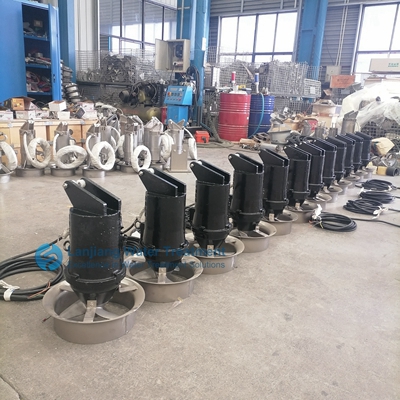The main difference between sludge mixer and sewage mixer is reflected in the following aspects:

1. Different processing media:
- Sludge mixer is mainly used to stir sludge, which is usually the substance that remains after precipitation and filtration of sewage, and has poor fluidity.
- The sewage mixer is mainly used to stir sewage, and the flow of sewage is similar to water.
2. Equipment design and characteristics:
- Sludge mixers may require stronger power and a more robust structure to cope with the high viscosity and low fluidity of the sludge to ensure efficient mixing and mixing.
- Sewage mixers may pay more attention to the uniform mixing of liquids and the pushing effect to promote the treatment process of sewage.
3. Application:
- Sludge mixer is widely used in sludge treatment, sludge concentration, digestion and other processes to help improve the efficiency and effect of sludge treatment.
- Sewage mixers are widely used in aeration and anaerobic tanks in industrial, urban and rural sewage treatment plants for sewage mixing and pushing.
4. Technical features:
- Sludge mixers may have a higher speed ratio and efficiency, as well as a compact structural design to meet the special needs of sludge mixing.
- Sewage mixers may pay more attention to low-position, lightweight construction to adapt to the narrow space above the container, and have better sealing and durability.
It should be noted that although there are some differences in the design and application of sludge mixers and sewage mixers, they may also have similarities in some aspects, such as the need to consider the durability of the equipment, maintenance and use of the environment and other factors. In addition, as technology advances and market needs change, the design and functionality of these two devices may also be constantly updated and optimized. Therefore, in the specific selection and use, should be based on the actual situation and demand for comprehensive consideration.
Post time:2024-06-27